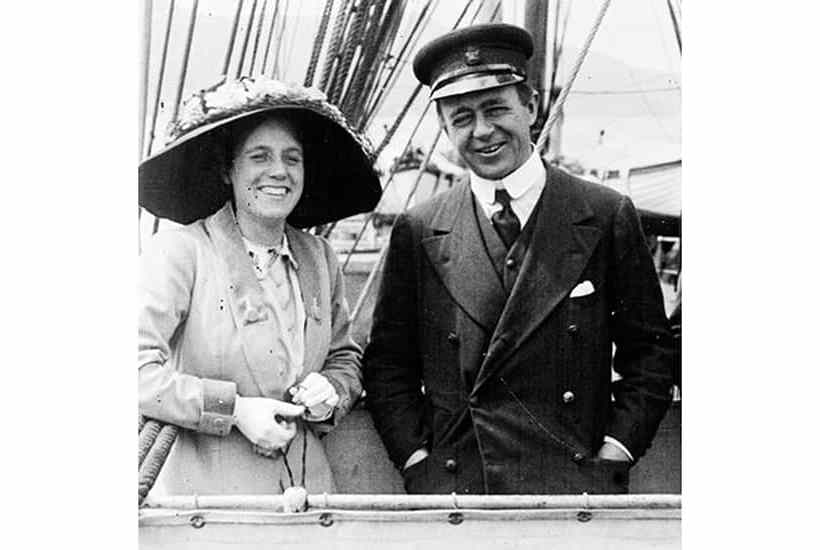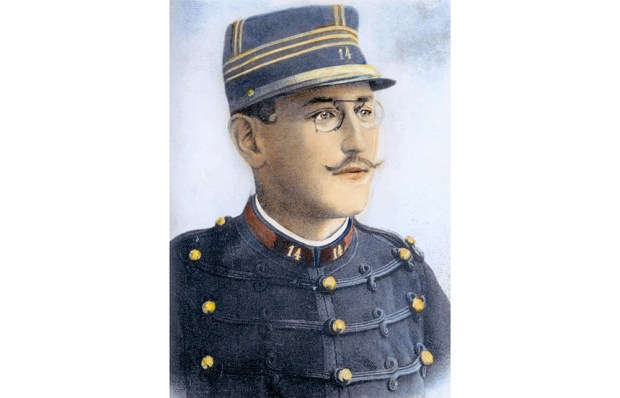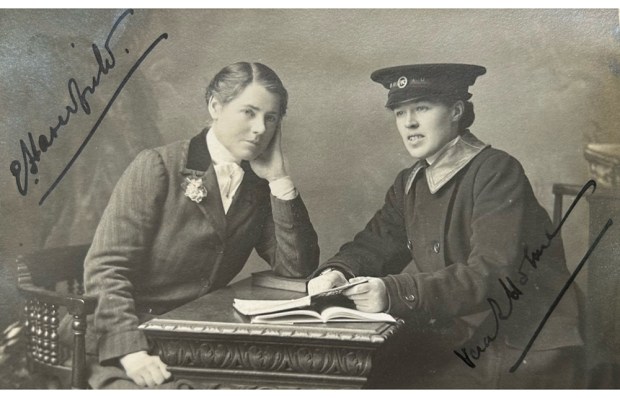The story of the five women waiting at home for Captain Scott and his doomed polar party is naturally occluded in tragedy. In this engaging book Katherine MacInnes for the first time presents them – two mothers at the outset, and three wives – as distinct individuals, separated one from the other by class, education, faith and temperament.
Kathleen Scott, the leader’s wife, was a gifted, confident sculptor with a lively social set and a house on Buckingham Palace Road. Caroline Oates, the widowed mother of the saturnine, Eton-educated cavalry officer Laurie (‘I dislike Scott intensely’), was the wealthy owner of Gestingthorpe Hall in Essex. The Scottish widow Emily Bowers, once a missionary teacher, was devoted to her only son Henry ‘Birdie’ Bowers, a naval officer and, at 28, the youngest of the polar party. Oriana ‘Ory’ Wilson, a vicar’s daughter, was the devout, childless wife of Edward ‘Bill’ Wilson, head of science on Scott’s team and the most significant confidant the captain ever had. Lois Evans had married Edgar ‘Taff’ Evans, a huge, thirsty petty officer from Rhossili on the Gower peninsula who had served with Scott on the 1901-5 Discovery expedition. (Lois was an English-speaking Conformist, which meant Church not Chapel.)
MacInnes, whose first book was a biography of Ory Wilson (Woman with the Iceberg Eyes, 2019), interleaves the stories of the two sets of five, and of the individuals within the sets. She has produced an elegant, densely textured work, like a tapestry, arranging the material over three parts. The first takes the story to the Cape Evans hut during the first Antarctic winter of 1910. The second ends with the expedition reaching New Zealand early in 1913 with its baleful news. The third covers the aftermath. MacInnes names her parts after musical notations and binds the book to Elgar’s violin concerto in B Minor, premiered at the Queen’s Hall in London just as Scott set off (‘Elgar provides a structure and the soundtrack to the story of the expedition and the empire it served’). Snow Widows is a work of historical reconstruction, written mostly in the dramatic present tense (‘High on the main mast, a flag flutters out’), and it reads like a good romantic novel apart from the denouement.
The author has mined the sources. They include Kathleen Scott’s diary, housed at Cambridge University Library, various archives, family papers and books published by surviving expeditioners. Much has been lost, including 50 letters from Taff to Lois, and Wilson’s correspondence, destroyed by Ory, fortunately after an early biographer had read it. Throughout, MacInnes recognises the vital importance of specificity and favours, in the service of narrative drive, brushstrokes of colour over the tyranny of the card index, admitting at the outset: ‘I have conflated dates and events.’ Thus the bacon fat of Lois’s sliced laverbread ‘sizzles in the pan’, Emily’s arthritis plays up and Laurie ‘Titus’ Oates dreams of ‘a big box of caramel creams’.
Kathleen’s ability as a sculptor is the only thing that makes her remotely like-able. MacInnes describes her as ‘breezy’. She was a keen anti-suffrage campaigner and while ‘women bore and irritate her in equal measure’, men love her: the prime minister H.H. Asquith frequently alights from his cab in Buckingham Palace Road. MacInnes deals well with the speculation that has swirled down the years that Kathleen had an affair with the Norwegian Fridtjof Nansen while her husband was staggering up the Beardmore glacier (‘a divine friendship’, Kathleen called it; MacInnes says it was an ‘incendiary flirtation’).
Meanwhile, another Norwegian, the lugubrious and noble Roald Amundsen, beat the Britons to the Pole and Scott and the other four perished on the return march. Their companions found three of the bodies when light returned to the ice. Ory hears the news from a newspaper hawker in the street. ‘Oh, how I long to be with you again,’ Bill had written to her from the tent.
In her efforts to maintain the individuality of her characters MacInnes overdoes the class angle. Caroline Oates’s ‘uniformed’ butler emerges regularly from his pantry and Lois Evans is permanently engaged picking cockles from Rhossili sands in order to feed her three children. To my mind the Elgar theme unduly complicates proceedings: there is already a lot going on in this book, with ten protagonists, two continents, flashbacks and fast forwards.
‘My aim,’ MacInnes writes at the outset, ‘has been not to analyse, but to try to place the stories in their historical context and let the women speak for themselves.’ She has done so. Snow Widows is a welcome contribution to polar studies and to the popular new genre examining the women left behind. They were only left behind in a geographical sense, after all; their inner lives were as richly complicated – as well as perhaps as unknowable – as those of their frozen-bearded menfolk.
Got something to add? Join the discussion and comment below.
Get 10 issues for just $10
Subscribe to The Spectator Australia today for the next 10 magazine issues, plus full online access, for just $10.
You might disagree with half of it, but you’ll enjoy reading all of it. Try your first month for free, then just $2 a week for the remainder of your first year.














Comments
Don't miss out
Join the conversation with other Spectator Australia readers. Subscribe to leave a comment.
SUBSCRIBEAlready a subscriber? Log in